Resources
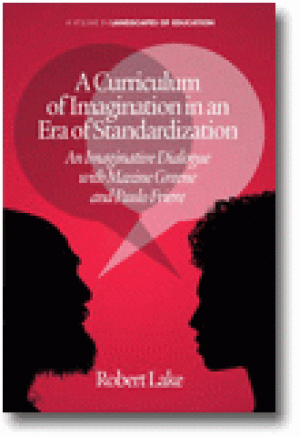
From the Publlisher A Curriculum of Imagination in an Era of Standardization In A Curriculum of Imagination in an Era of Standardization: An Imaginative Dialogue with Maxine Greene and Paulo Freire, explores with the reader what is meant by imagination in the work of Maxine Greene and Paulo Freire and their relevance in an era of increasingly standardized and highly scripted practices in the field of education. The author explores how imagination permeates every aspect of life with the intent to develop capacity with the readers to look beyond the taken-for-granted, to question the normal, to develop various ways of knowing, seeing, feeling, and to imagine and act upon possibilities for positive social and educational change. The principal aspect of the work illustrated in this book that distinguishes it from other work is that an “imaginary” dialogue between Maxine Greene and Paulo Freire runs through the book using actual citations from their work. Each chapter starts with such a dialogue interspersed with the works of others and the author’s critical autobiographical reflections. With a brief overview of the socio-cultural evolution of imagination from pre-literate times to the present, the author explores some of the current iterations of imagination including the eugenics movement and “dark” imagination, sensing gaps and creative/critical imagination, metaphors as the language of imagination and empathy as social imagination. Reflecting upon emerging tensions, challenges, and possibilities curriculum workers face in such an era of standardization, the author calls for a curriculum of imagination. After providing a brief overview of the socio-cultural evolution of imagination from pre-literate times to the present, the author looks at some of the current iterations of imagination, including the eugenics movement and “dark” imagination, sensing gaps and creative/critical imagination, metaphors as the language of the imagination, and empathy as social imagination. All of these ideas are then incorporated in a curriculum of imagination that is envisioned through Joseph Schwab’s four commonplaces of curriculum followed by a discussion of emerging tensions, issues and possibilities for praxis and scholarship in present and future inquiry.
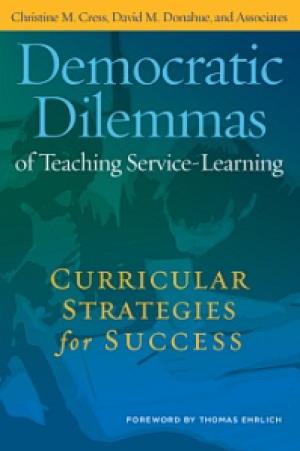
A college student wants to lead a campaign to ban a young adult novel from his child’s elementary school as his service-learning project in a children’s literature course. Believing the book is offensive to religious sensibilities, he sees his campaign as a service to children and the community. Viewing such a ban as limiting freedom of speech and access to information, the student’s professor questions whether leading a ban qualifies as a service project. If the goal of service is to promote more vital democratic communities, what should the student do? What should the professor do? How do they untangle competing democratic values? How do they make a decision about action? This book addresses the teaching dilemmas, such as the above, that instructors and students encounter in service-learning courses. Recognizing that teaching, in general, and service-learning, in particular, are inherently political, this book faces up to the resulting predicaments that inevitably arise in the classroom. By framing them as a vital and productive part of the process of teaching and learning for political engagement, this book offers the reader new ways to think about and address seemingly intractable ideological issues. Faculty encounter many challenges when teaching service learning courses. These may arise from students’ resistance to the idea of serving; their lack of responsibility, wasting clients’ and community agencies’ time and money; the misalignment of community partner expectations with academic goals; or faculty uncertainty about when to guide students’ experiences and when direct intervention is necessary. In over twenty chapters of case studies, faculty scholars from disciplines as varied as computer science, engineering, English, history, and sociology take readers on their and their students’ intellectual journeys, sharing their messy, unpredictable and often inspiring accounts of democratic tensions and trials inherent in teaching service-learning. Using real incidents – and describing the resources and classroom activities they employ – they explore the democratic intersections of various political beliefs along with race/ethnicity, class, gender, ability, sexual orientation, and other lived differences and likenesses that students and faculty experience in their service-learning classroom and extended community. They share their struggles of how to communicate and interact across the divide of viewpoints and experiences within an egalitarian and inclusive environment all the while managing interpersonal tensions and conflicts among diverse people in complex, value-laden situations. The experienced contributors to this book offer pedagogical strategies for constructing service-learning courses, and non-prescriptive approaches to dilemmas for which there can be no definitive solutions. (From the Publisher)
This paper explores how adult learners in a college composition course resisted pedagogies and teaching strategies designed to critically examine student and teacher assumptions about classism, racism, and sexism as well as other oppressive structures and discourses.

A Critical Pedagogy of Embodied Education outlines the pedagogy of activism and the process of learning to become an activist. Based on empirical research conducted in Australia, it explores the embodied learning of activists as they learn to be and become activists. This book, unlike any current publication on social purpose education, explores the differences and similarities between two groups of activists: lifelong activists who have been engaged in campaigns and socials movements over many years - often a lifetime - and the learning of circumstantial activists, those protestors who come to activism due to a series of life events. The book uncovers through multiple case studies the embodied pedagogy of activists who gain knowledge through the practical experience of being in the world of activism. Their learning is often driven by emotional agency and is social, informal, and critically cognitive. Using critical pedagogy as a lens, the book not only expands our understanding of the epistemology of activism, but provides insight into adult education as an embodied practice. (From the Publisher)

This book provides comprehensive analyses of issues related to the struggle against the forces of imperial-induced privatization, not just in education, but in all of social life. It situates Critical Pedagogy in the twenty-first century and offers not only critiques but also practical applications, suggestions, and strategies on how attacks can be collectively resisted, challenged, and eradicated especially by those teaching in schools and universities. (From the Publisher)
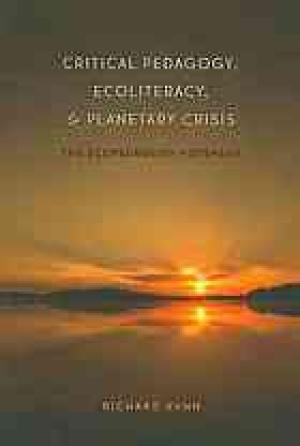
We live in a time of unprecedented planetary ecocrisis, one that poses the serious and ongoing threat of mass extinction. What role can critical pedagogy play in the face of such burgeoning catastrophe? Drawing upon a range of theoretical influences - including Paulo Freire, Ivan Illich, Herbert Marcuse, traditional ecological knowledge, and the cognitive praxis produced by today's grassroots activists in the alter-globalization, animal and earth liberation, and other radical social movements - this book offers the foundations of a philosophy of ecopedagogy for the global north. In so doing, it poses challenges to today's dominant ecoliteracy paradigms and programs, such as education for sustainable development, while theorizing the needed reconstruction of critical pedagogy itself in light of our presently disastrous ecological conditions. Students and teachers of critical pedagogy at all levels, as well as those involved in environmental studies and various forms of sustainability education, will find this book a powerful provocation to adjust their thinking and practice to better align with those who seek to abolish forms of culture predicated upon planetary extermination and the domination of nature. (From the Publisher)
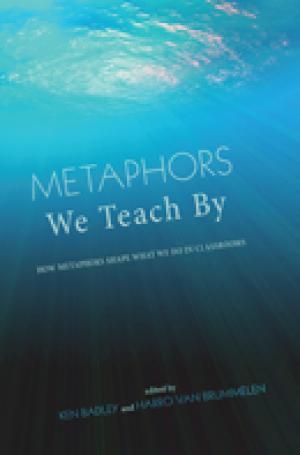
Metaphors We Teach By helps teachers reflect on how the metaphors they use to think about education shape what happens in their classrooms and in their schools. Teaching and learning will differ in classrooms whose teachers think of students as plants to be nurtured from those who consider them as clay to be molded. Students will be assessed differently if teachers think of assessment as a blessing and as justice instead of as measurement. This volume examines dozens of such metaphors related to teaching and teachers, learning and learners, curriculum, assessment, gender, and matters of spirituality and faith. The book challenges teachers to embrace metaphors that fit their worldview and will improve teaching and learning in their classrooms. (From the Publisher)
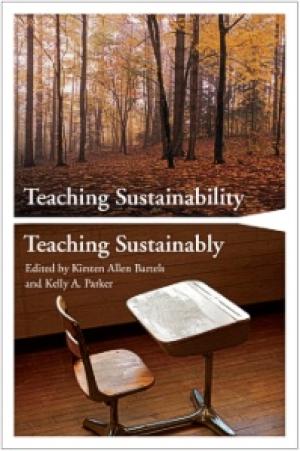
Over the coming decades, every academic discipline will have to respond to the paradigm of more sustainable life practices because students will be living in a world challenged by competition for resources and climate change, and will demand that every academic discipline demonstrate substantial and corresponding relevance. This book takes as its point of departure that integrating a component of sustainability into a discipline-specific course arises from an educator asking a simple question: in the coming decades, as humanity faces unprecedented challenges, what can my discipline or area of research contribute toward a better understanding of these issues? The discipline need not be future-oriented: an archaeologist, for instance, could incorporate into a course some aspects of sustainable archaeological practices in areas threatened by rapid climate change, as well as examples of sustainable or unsustainable ways of living practiced by members of the long-gone society under investigation. This book also argues that courses about sustainability need to cross disciplinary boundaries, both because of the inter-relatedness of the issues, and because students will require the ability to use interdisciplinary approaches to thrive through the multiple careers most of them will face. The contributions to this book are presented under four sections. “Sustainability as a Core Value in Education” considers the rationale for incorporating sustainability in disciplinary courses. “Teaching Sustainability in the Academic Disciplines” presents eight examples of courses from disciplines as varied as agriculture, composition, engineering, and teacher education. “Education as a Sustainable Practice” reviews how the physical environment of the classroom and the delivery of instruction need themselves to reflect the values being taught. The final section addresses the issues of leadership and long-term institutional change needed to embed sustainable practice as a core value on campus. (From the Publisher)